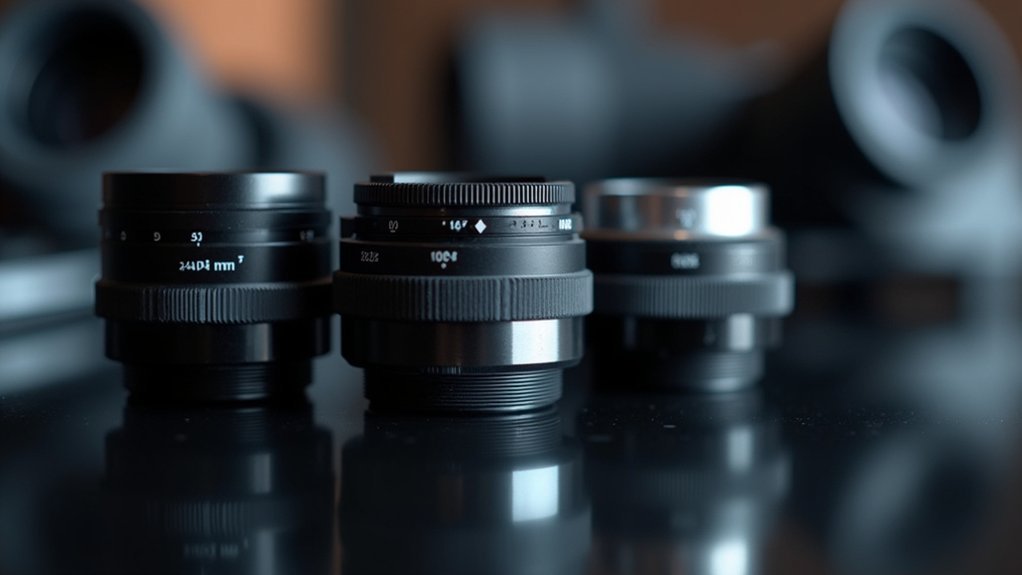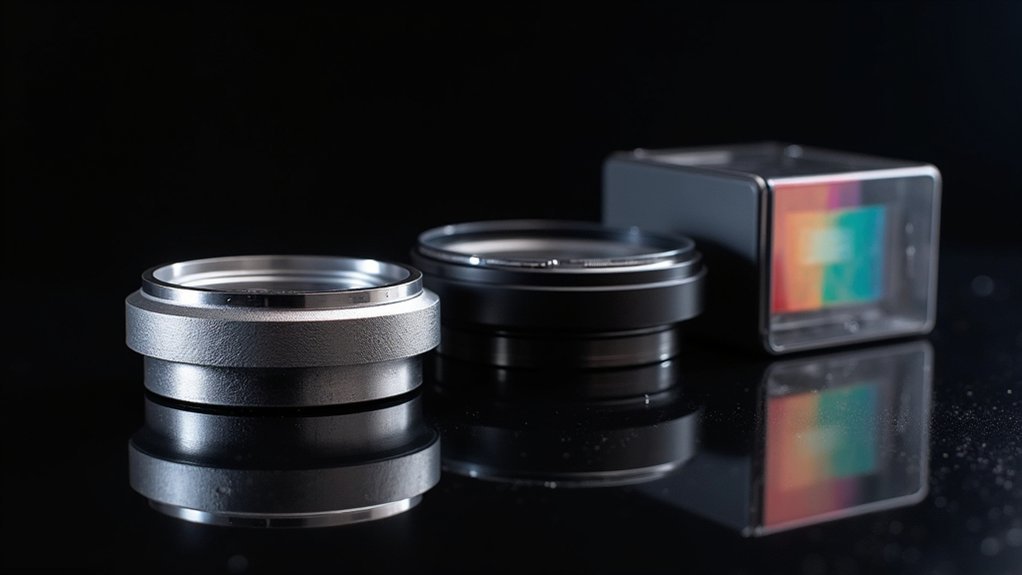For scientific imaging, the top 3 light adapters include polarizing microscope adapters with T2 threads for direct DSLR connections, multi-coated relay systems that maximize contrast while minimizing reflections, and variable magnification adapters offering precision adjustments with universal T-thread compatibility. You’ll benefit from enhanced clarity, improved light transmission, and flexibility across materials science and biological research applications. Explore these options to transform your standard camera into a professional-grade scientific imaging tool.
Polarizing Microscope Adapters for Digital SLR Cameras

Photography enthusiasts and scientific researchers alike can transform their digital SLR cameras into powerful scientific imaging tools with polarizing microscope adapters.
These specialized adapters feature T2 threads that seamlessly connect your Canon EOS cameras or Nikon models directly to microscopes, eliminating the need for eyepiece projection.
Precision-engineered T2 threads create direct camera-to-microscope connections, bypassing eyepiece projection for superior scientific imaging.
You’ll capture remarkably clear, flat-field images with enhanced contrast and detail when viewing specimens under polarized light. The direct connection guarantees precise image capture that’s vital for biological research and materials science applications.
Many polarizing microscope adapters for Digital SLR Camera systems include built-in filters or allow for additional polarizing filter attachments to reduce glare and improve image quality.
If you’re examining structural details or textures in specimens, these adapters will provide the imaging precision you need for professional-quality scientific documentation.
Multi-Coated Relay Systems for Enhanced Polarized Light Transmission
When exploring advanced scientific imaging solutions, you’ll find multi-coated relay systems at the forefront of polarized light technology.
These Scientific Adapters dramatically improve contrast and clarity in your research imaging by maximizing light transmission while minimizing reflections.
A quality Camera Adapter utilizing multi-coated relay systems offers you:
- Wavelength selectivity – Enhanced transmission of specific light frequencies, perfect for fluorescence and specialized imaging techniques
- Universal compatibility – Seamless integration with C-mount and Nikon F-mount cameras for versatile microscopy setups
- Flat field preservation – Consistently sharp images across the entire frame, even at high magnifications
When you’re working with polarized light applications, these multi-coated relay systems deliver the precision and efficiency your scientific imaging demands.
Variable Magnification Adapters for Polarized Light Applications

As you explore deeper into polarized light microscopy, variable magnification adapters become essential tools for achieving precision in your scientific imaging.
These adapters offer you the flexibility to adjust magnification levels with exactness, ensuring superior image quality for your polarized light applications.
Most variable magnification adapters feature a universal T-thread design, making them compatible with your existing cameras and optical systems.
You’ll appreciate how they minimize vignetting, maintaining consistent illumination across your entire field of view.
When conducting materials science or biological research, you’ll find these adapters particularly valuable.
Their high-quality optics enhance contrast and clarity, allowing you to effectively manipulate light conditions and distinguish fine structural details in your specimens that might otherwise remain invisible under standard illumination.
Frequently Asked Questions
How Long Do Light Adapters Typically Last Before Requiring Replacement?
Light adapters typically last 3-5 years before you’ll need replacements, depending on usage frequency and conditions. You’ll notice deterioration in image quality or connection issues when it’s time for a new one.
Are There Waterproof Light Adapters for Underwater Scientific Imaging?
Yes, you’ll find waterproof light adapters specifically designed for underwater scientific imaging. They feature specialized seals and housing to protect connections from water damage while maintaining optical quality for your underwater research applications.
Can Light Adapters Affect the Color Accuracy of Scientific Images?
Yes, light adapters can greatly affect color accuracy in your scientific images. They may introduce color casts, alter spectral distribution, or change color temperature if they don’t provide neutral transmission or proper filtration.
What Temperature Ranges Can Scientific Imaging Adapters Withstand?
Scientific imaging adapters typically withstand temperatures from -40°C to +85°C, though high-end models can handle extreme ranges from -196°C (cryogenic) to +150°C. You’ll need specialized adapters for extreme temperature environments.
Do Light Adapters Require Special Maintenance or Cleaning Procedures?
You’ll need to clean light adapters with lint-free cloths and optical cleaning solutions. Don’t use alcohol on coated optics. Regular dust removal and proper storage in dry environments prevent contamination and extend their lifespan.
In Summary
You’ve explored the top three light adapters that can elevate your scientific imaging capabilities. Whether you choose the DSLR-compatible polarizing microscope adapters, opt for multi-coated relay systems with superior light transmission, or invest in variable magnification adapters for specialized polarized applications, you’ll notice significant improvements in image quality and research outcomes. Select the adapter that best fits your specific imaging needs and budget constraints.





Leave a Reply